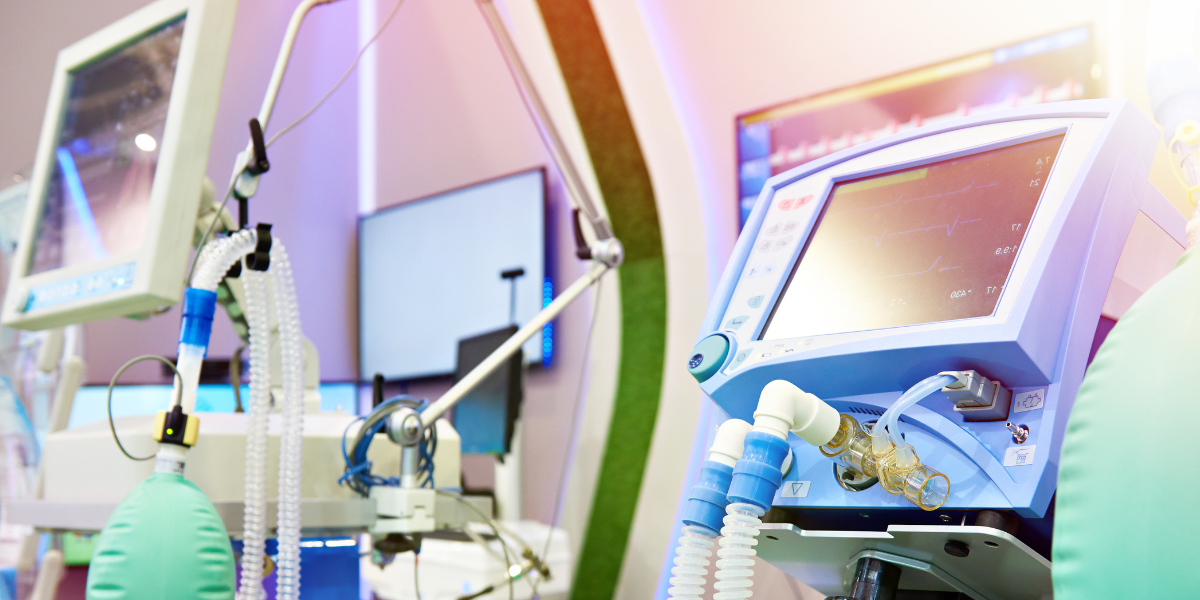Respiratory equipment plays a crucial role in the treatment and management of respiratory disorders, helping patients breathe more easily and effectively. From inhalers and nebulizers to ventilators and oxygen concentrators, these devices come in a variety of forms and serve a range of purposes. In recent years, advancements in technology have led to the development of innovative respiratory equipment that is more effective, user-friendly, and portable than ever before. In this article, we’ll explore some of the latest innovations in respiratory equipment and their significant impact on patient care.
Advancements in Inhalers and Nebulizers
Inhalers and nebulizers are essential devices for delivering medications directly to the lungs, making them particularly effective for treating respiratory conditions such as asthma, chronic obstructive pulmonary disease (COPD), and cystic fibrosis. Recent advancements in inhaler and nebulizer technology have focused on improving drug delivery, enhancing convenience, and increasing portability.
1. Smart Inhalers: Smart inhalers are inhaler devices equipped with sensors and wireless connectivity that track medication usage and provide feedback to patients and healthcare providers. These devices can help patients monitor their inhaler use, track their symptoms, and identify patterns in their asthma or COPD management.
2. Portable Nebulizers: Portable nebulizers are compact, lightweight devices that allow patients to administer aerosolized medications on the go. These devices are battery-powered and can be used anywhere, making them ideal for patients who need frequent or emergency respiratory treatments.
3. Vibrating Mesh Technology: Vibrating mesh nebulizers use a vibrating mesh membrane to aerosolize medication into fine droplets, which can then be inhaled directly into the lungs. These nebulizers are quieter, more efficient, and produce a more consistent particle size compared to traditional jet nebulizers.
4. Breath-Actuated Inhalers: Breath-actuated inhalers deliver medication automatically when the patient inhales, eliminating the need for coordination between inhalation and medication release. These devices are particularly beneficial for patients who have difficulty using traditional metered-dose inhalers correctly.
Advancements in Ventilators
Ventilators are life-saving devices that provide mechanical ventilation to patients who are unable to breathe adequately on their own. Recent advancements in ventilator technology have focused on improving patient comfort, enhancing monitoring capabilities, and increasing mobility.
1. High-Flow Nasal Cannula (HFNC) Therapy: High-flow nasal cannula (HFNC) therapy delivers heated and humidified oxygen at high flow rates through a nasal cannula. HFNC therapy can improve oxygenation and reduce the work of breathing in patients with respiratory failure, pneumonia, or acute respiratory distress syndrome (ARDS).
2. Non-Invasive Ventilation (NIV) Masks: Non-invasive ventilation (NIV) masks are designed to deliver positive pressure ventilation without the need for an endotracheal tube or tracheostomy. These masks are more comfortable and less invasive than traditional ventilator interfaces, making them suitable for use in patients with acute or chronic respiratory failure.
3. Portable Ventilators: Portable ventilators are lightweight, battery-powered devices that allow patients to receive mechanical ventilation outside of the hospital setting. These ventilators are ideal for patients who require long-term ventilation at home or during transport.
4. Adaptive Support Ventilation (ASV): Adaptive support ventilation (ASV) is a ventilation mode that automatically adjusts the ventilator settings based on the patient’s respiratory mechanics and effort. ASV can improve patient-ventilator synchrony and reduce the risk of ventilator-induced lung injury.
Advancements in Oxygen Therapy Equipment
Oxygen therapy is a common treatment for patients with respiratory conditions that cause low blood oxygen levels, such as COPD, pneumonia, and acute respiratory failure. Recent advancements in oxygen therapy equipment have focused on improving oxygen delivery, increasing portability, and enhancing patient comfort.
1. Oxygen Concentrators: Oxygen concentrators are devices that extract oxygen from the surrounding air and deliver it to the patient at higher concentrations. Portable oxygen concentrators are lightweight, battery-powered devices that allow patients to receive supplemental oxygen on the go.
2. Liquid Oxygen Systems: Liquid oxygen systems store oxygen in liquid form, which is then converted to a gaseous state and delivered to the patient through a nasal cannula or mask. Liquid oxygen systems are more efficient and provide a higher flow rate compared to traditional oxygen cylinders.
3. Oxygen Conservators: Oxygen conservators are devices that deliver oxygen only during inhalation, reducing oxygen waste and prolonging the duration of portable oxygen tanks. These devices are particularly beneficial for patients who require oxygen therapy during exertion or exercise.
4. Oxygen Delivery Masks: Oxygen delivery masks are designed to deliver oxygen to the patient’s airway at a controlled flow rate. These masks are available in various designs, including nasal cannulas, simple face masks, and non-rebreather masks, to suit the patient’s needs and preferences.
Advancements in Sleep Apnea Treatment
Sleep apnea is a common sleep disorder characterized by repeated pauses in breathing during sleep, leading to reduced oxygen levels and disrupted sleep patterns. Continuous positive airway pressure (CPAP) therapy is the gold standard treatment for sleep apnea, and recent advancements in CPAP technology have focused on improving comfort, compliance, and effectiveness.
1. Auto-Titrating CPAP Machines: Auto-titrating CPAP machines, also known as APAP machines, automatically adjust the pressure level based on the patient’s breathing patterns throughout the night. These machines provide a more customized and comfortable therapy experience compared to traditional CPAP machines.
2. CPAP Masks with Adjustable Headgear: CPAP masks with adjustable headgear allow patients to customize the fit and comfort of their mask to reduce air leaks and improve compliance with therapy.
3. CPAP Machines with Humidification: CPAP machines with integrated humidifiers add moisture to the air delivered to the patient’s airway, reducing dryness and irritation of the nose and throat.
4. Portable CPAP Machines: Portable CPAP machines are smaller, lightweight versions of standard CPAP machines that are designed for travel and on-the-go use. These machines are battery-powered and can be used anywhere, making them ideal for patients who travel frequently or have difficulty sleeping away from home.
Conclusion
Advancements in respiratory equipment have transformed the treatment and management of respiratory disorders, improving patient outcomes and quality of life. From innovative inhalers and nebulizers to advanced ventilators, oxygen therapy equipment, and sleep apnea treatment devices, these technologies offer more effective, convenient, and comfortable options for patients with respiratory conditions. With ongoing research and development, the future of respiratory equipment looks promising, with the potential to further enhance patient care and improve respiratory health worldwide.

